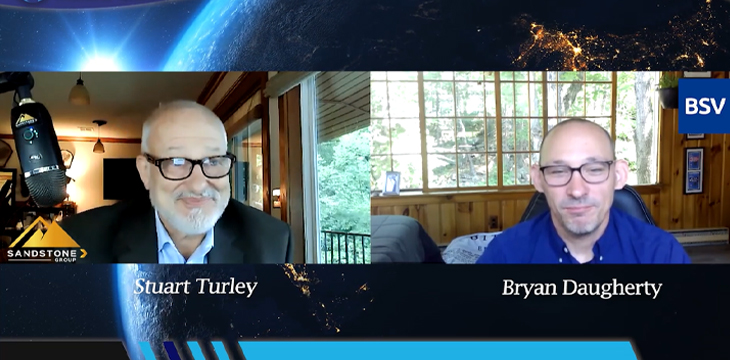|
Getting your Trinity Audio player ready...
|
Bryan Daugherty, the Public Policy Director for BSV Blockchain, was a guest on the Energy News Beat podcast hosted by Stuart Turley.
In the episode, Daughtery and Turley explore how blockchain provides a solution to the greenwashing problem in the ESG world, the value that blockchain technology creates when utility is present, the amount of energy proof of work (PoW) blockchain protocols and traditional systems consume, and more. Here are a few highlights from the episode.
What is Blockchain?
Daugherty sets the stage by explaining the education gap that exists within the blockchain and digital asset spaces due to a majority of people getting their education from the media, which tends to only focus on the speculative aspects of digital currency rather than the digital assets that can be used to build solutions that reduce costs and boost profits while increasing transparency, security, and efficiency thanks to the blockchain.
Daugherty explains how blockchain provides the infrastructure that removes third parties, increasing security and transparency along a value chain, which is why blockchain is a good fit for ESG-related matters.
He gives an example of a fisherman catching a fish and moving along the supply chain until it reaches its final destination, a sushi restaurant. In today’s world, it is challenging, if not impossible, to authenticate the fish’s data in real-time, but with blockchain—a public, transparent append-only ledger—every party involved in a transaction can monitor the fish’s journey and specs every step of the way.
“You can put data on-chain because it’s less than a thousandth of a penny per kilobyte. In a lot of cases, you want to know where ingredients are coming from, where they were sourced, the quality of these ingredients, and the testing used to evaluate them. The blockchain acts as the universal source of truth so at the end of the day, you have this accountability if something goes wrong, you have this ledger, this universal source of truth that allows you to go back in time, and it’s immutable, so you know that data doesn’t change,” Daugherty explains.
“All of that data is worth money to companies. So now you are not only building a better product, you are building a better more resilient infrastructure, a faster more real-time infrastructure, so now you can really start to facilitate truth,” he adds.
The blockchain’s ability to immutably log and timestamp data on a public ledger solves a significant problem in the ESG world—greenwashing. Greenwashing is when a company claims to be environmentally conscious for marketing purposes but isn’t making any significant sustainability efforts. To date, this problem has been hard to pin down because verifying the authenticity of data has been difficult. However, using a blockchain to record data can solve this issue.
“When it comes to the ESG problem that we have, that companies are wondering how they authenticate and verify data, they really just need to put the data they are already collecting into a ledger of events so that they can go back to it,” Daugherty states.
Digital currency’s environmental impact
Daugherty and Turley briefly talk about energy consumption in the context of proof-of-work protocols as well as legacy systems. Daugherty points out that energy efficiency depends upon a system’s outputs. If the same amount of energy is required for both a BTC transaction and a BSV transaction and BTC puts out 1 MB worth of value while BSV creates 8 GB of value or more than the Co2 output for each protocol will be drastically different. He also notes that this is a factor that must be considered when discussing proof-of-work mining’s energy consumption.
Daugherty points out that the amount of energy traditional databases consume has just as much of an impact on the environment but is often ignored.
“One YouTube video, if it’s got 5 million views, it strikes up 8 data centers when you google it. How much energy does that use? We’re talking 72 Olympic pools of water just to store and bring up access for one Youtube video,” he says.
In closing, Daugherty and Turley talk about how having a universal source of truth and data ownership empowers consumers and end-users the way the current internet doesn’t, how micropayments and microtransactions have enabled new business models, and what Daugherty see’s taking place in the government front.
You can learn more about how blockchain can be used in ESG verticals by watching ENB “#59: What does Bitcoin have to do with ESG in countering “Greenwashing” in corporate America?”
Also watch: The BSV Global Blockchain Convention panel, ESG Compliance & Blockchain
https://youtu.be/RzSCrXf1Ywc?t=22358

 12-17-2025
12-17-2025 





